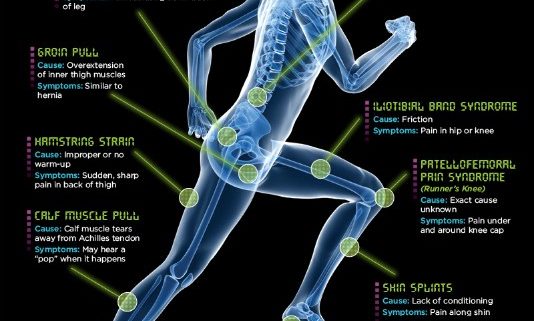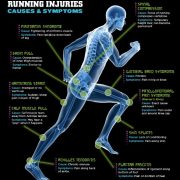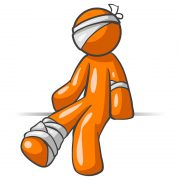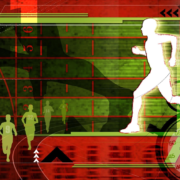Prevent Common Running Injuries
Mastering Common Injuries
Simple exercises to keep you on the road instead of in rehab
Source: http://www.runnersworld.com/masters-training/mastering-common-injuries
We’re like players in a Greek tragedy. We begin each new training cycle with optimism and a sense of purpose: We will train hard, stay healthy, and race fast. And for a while we do. For a week, or a month, or a year. And then like the unwitting participants in a play by Aeschylus or Euripides, we make some simple mistake – we run a little too fast, or a little too far, or step wrong on a trail while daydreaming about a big race – and we get injured.
“My Achilles was sore before I ran the masters 800 [at the Mt. SAC Relays],” said Andy DiConti, my 48-year-old clubmate on Compex Racing, when we spoke recently. “But I figured I’d run two 1500s in 4:11 this past month, so I could handle the pace.”
Andy figured wrong. A 60-second final lap left him hobbling, finished for the season. I asked Andy if he’d been doing the Achilles strengthening exercises we’d discussed.
“I should start,” he said.
An essential element of tragedy is that the hero’s downfall should occur due to some miscalculation on his part. For masters runners, that mistake is often our refusal to anticipate and prevent injury. But it doesn’t have to be that way.
The time to resolve most running injuries is before they occur. Including each of the following stretches and exercises in our post-run routine can help accomplish this goal.
Towel Toe Curls Target: Plantar Fasciitis

1) Sit barefoot in a chair with a towel spread on the floor in front of you. Put a shoe or some similar weight on the towel’s opposite end for resistance.
2) Keeping your heels on the floor, pull the towel toward you with your toes, bunching the towel beneath your arch (or behind your heels) until you’ve reeled in its entire length.
3) Do 2-3 repetitions.
Remarks: This exercise is the best way to prevent plantar fasciitis. The plantar fascia begins at our heel, then runs along our arch to our toes. Plantar fasciitis can be felt as pain in the heel or the arch. Untreated, it can linger for months – or years.
IT Band Stretch Target: Illiotibial Band Syndrome

1) Assume a “revised hurdler’s stretch” position: Sit on the floor with one leg extended in front of you, toes pointed up, and the bent knee tucked to within one or two inches of the straightened leg. Your thighs must be almost parallel.
2) Bring your head or torso directly forward over the knee of the extended leg, creating a “pull” on the outside of that leg (along the IT band, not the hamstring!).
3) Hold for 60 seconds.
4) Repeat with the opposite leg.
Remarks: The IT band runs along the outside of the leg, from hip to knee. Tightness and inflammation of the IT band can lead to pain at either the hip or along the outside of the knee, a syndrome that can persist for months.
The Daydreamer Target: Lower Back Pain, Hamstring Tightness

1) Lie on your back with your arms out to the sides, hands at approximately waist level, with your lower legs and feet propped on a chair, a 90-degree bend at your knees.
2) Hold for 5 to 10 minutes.
Remarks: Take slow, deep breaths while relaxing in this position. Try to keep your feet from rolling outward. Don’t “do” anything except maintain the position.
Foot Countdown Target: Tibial Tendonitis (shin and ankle pain), Plantar Fasciitis

1) Lie on the floor, one leg flat, toes pointed up, with the opposite leg raised, bent 90 degrees at the knee (and propped up by your hands).
2) Draw numbers, beginning at “15” and counting down to “1,” with your toes, limiting motion to the ankle and foot (hold the knee immobile).
3) Repeat with your opposite foot.
Remarks: Don’t strain. We aren’t trying to get stronger. We’re simply recruiting rarely utilized muscles in the lower legs. This leads to better muscle balance and a more efficient foot plant. Variations on this exercise include: Foot Orbits, rotating each foot clockwise and then counterclockwise 20 times; Foot Gas Pedals, pointing and flexing each foot 20 times; Foot Alphabet, drawing the alphabet with your toes.
Beach Towel Stretching Target: Calf Tightness and Strains, Hamstring Tightness and Strains, Achilles Tendinosis, Plantar Fasciitis
Beach Towel Calves

1) Lie on your back with one knee bent, foot flat on the floor, and the other leg raised and straightened with thighs parallel.
2) Hook a rolled beach towel around your forefoot and gently pull back your toes to lengthen (stretch) the calf.
3) Simultaneously flex the raised thigh.
4) Hold for 30 seconds.
5) Repeat with the opposite leg.
Beach Towel Hamstrings

1) Lie on your back with one knee bent, foot flat on the floor, and the other leg raised and straightened.
2) Hook your rolled beach towel around your arch and pull gently against the foot, raising the leg vertically to lengthen (stretch) the hamstring.
3) Simultaneously flex the raised thigh.
4) Hold for 30 seconds.
5) Repeat with the opposite leg.
Remarks: Don’t overstretch. Think of these exercises as “loosening” rather than “stretching.” Your muscles aren’t taffy. Also, it makes no difference if we use a belt or strap in place of the beach towel.
Heel Dips Target: Achilles Tendinosis

1) Balance on a platform or step, with your toes on the edge and your heels extending over the edge.
2) Use your fingers or hands for support (no teetering!).
3) Put all your weight on one foot, then slowly lower the heel of that foot, lengthening the calf.
4) Use both feet to rise back to your starting position.
5) Start with 3-5 repetitions, then gradually build up to 15-20.
6) Repeat with the opposite foot.
Remarks: Don’t overstretch the calf. This eccentric exercise strengthens the calves and Achilles, triggering an adaptation that leaves your Achilles capable of withstanding the loads encountered in normal training.
A final word: It isn’t necessary to perform all of these exercises and stretches every day. But working them into our post-run routine 2-3 times a week can help protect us against many common masters injuries.









